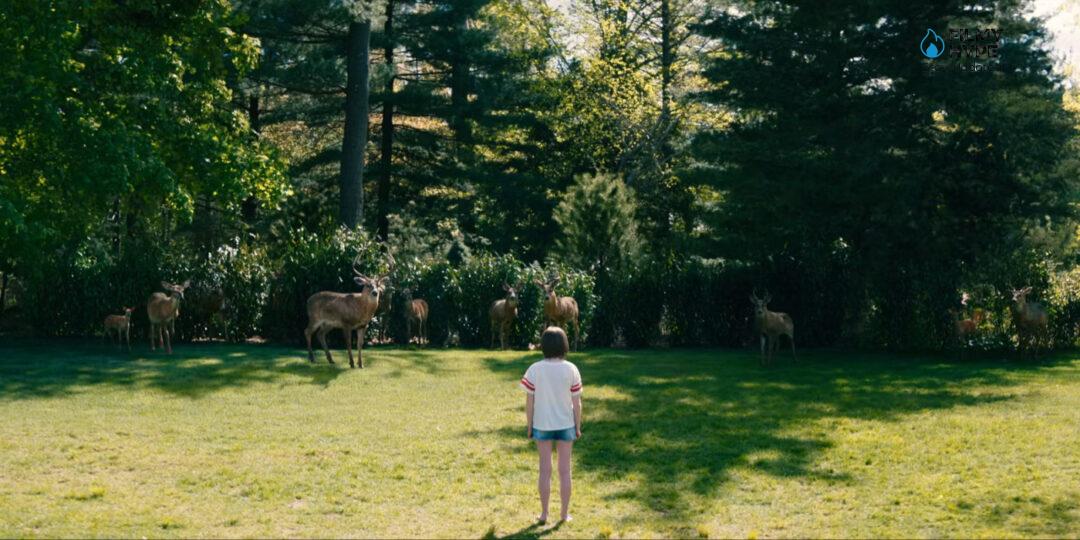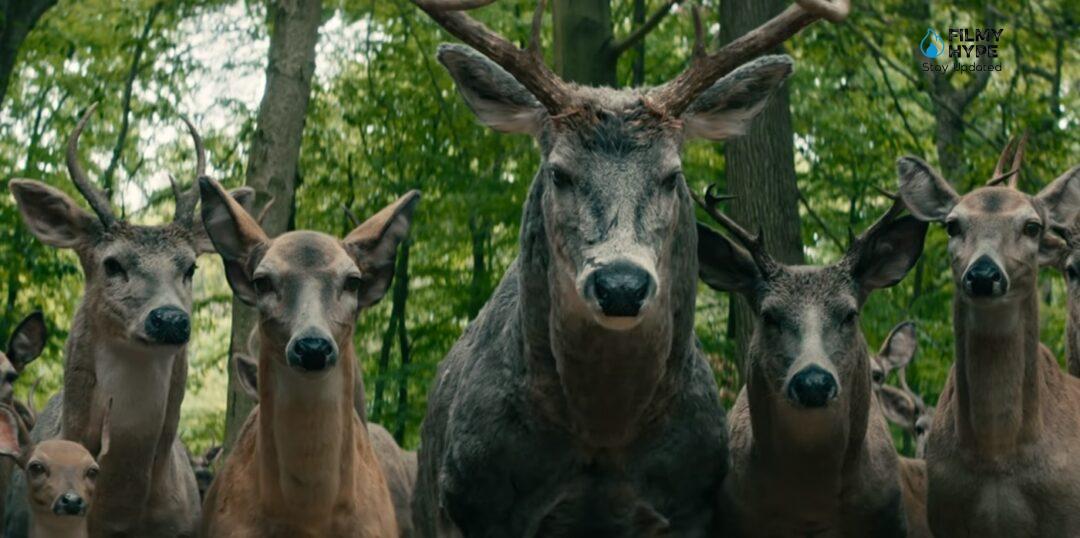Leave the World Behind: The Importance of Deer in History [Theories]
In the universe of Netflix’s, Leave the World Behind, the Sandfords and Scotts encounter a large group of deer while facing a mysterious emergency. The initial sighting of these animals considered a good omen by Clay, quickly turns sinister when the herd becomes a threatening presence on the property. In particular, when deer surround Ruth Scott, Amanda intervenes to save her, but the reason for the massive presence of these animals in the forest remains an enigma.
Leave the World Behind: The Response to the Impending Disaster?
The presence of the herd of deer could be interpreted as an indication of impending disaster. The belief that animals can sense disasters is widely accepted. As the human-caused calamity begins to unfold, deer anticipate the danger before humans do and begin their migration, seeking a safer location. The house and property where the Sandfords planned to spend the weekend appear to coincide with the deer’s migratory route, explaining their recurring presence among residents. When Rose sees hundreds of deer, the country still doesn’t understand the severity of the disaster it is about to face, but the animals are already aware.

According to the novel of the same name by Rumaan Alam, “The eye could not catch them all [the herd of deer], it could not find them in the shadows of the trees. Only people who knew about these things knew that there were about thirty-six thousand deer in the county. They weren’t the deer Rose had seen, but they were on their way to join them. A mass migration. A disaster response. An indicator of disaster. A disaster unfolding.” This description clarifies why the herbivores group together and appear before the Sandfords and Scotts. Unfortunately, Rose doesn’t understand why these animals appear in such large numbers on the property to alert her family and the Scotts about the ongoing disaster.
Disorder in the Natural Order!
The herd of deer and their aggressive behavior make it clear that the natural order on the planet has ceased to exist in the United States. Despite witnessing surprising events, the Sandfords and Scotts are slow to understand what is happening in the country. When they finally realize the need for a refuge to guarantee their survival, contrary to their natural behavior, the animals have already started looking for ways to protect themselves. In addition to the deer, a flock of geese noisily flies by, anticipating disaster, as GH sets out to gather more information about the national emergency.
Similarly, the flamingos abandon their natural habitat and end up in the pool at GH’s house, indicating how the order in the world of fauna is altered due to human actions. Alam’s novel and Sam Esmail’s film use these bizarre events and sightings to highlight the peculiarity of the apocalypse unfolding in the country. More than explosions and military forces, the extraordinary presence of deer and flamingos manages to increase the mystery surrounding the national calamity and the imminent apocalypse that the two families face.
Hiding the Severity of the Disaster?
Esmail chooses to hide the true extent of the disaster to increase the tension, after all, the invisible is often scarier than the explicit. The filmmaker uses animals as effective tools to represent calamity without directly exposing their nature. This approach adds a layer of suspense to the narrative, intensifying viewers’ anxiety by gradually revealing elements of the disaster.
Theories About the Meaning of Deer?
Theories about the meaning of deer in this context vary, but a common interpretation is that they represent the intrinsic connection between nature and human events. Deer, acting as silent sentinels, anticipate disasters that humans, engaged in their everyday lives, fail to perceive. This raises philosophical questions about humanity’s disconnection from nature and how events caused by us affect the natural balance. Another theory suggests that deer personify vulnerability and powerlessness in the face of the forces that shape destiny. As humans try to understand and control their surroundings, the massive presence of deer highlights the fragility of the established order. The mass migration of these animals can also symbolize the incessant search for safety, a reflection of the human instinct for preservation.

Conclusion: The Deep Symbology of Deer in Leave the World Behind
Leave the World Behind transcends the conventions of disaster cinema, incorporating symbolic elements, such as the herd of deer, to convey a deeper message about the human condition. The presence of these animals is not just a plot device, but a complex metaphor that invites reflection on our relationship with nature, our ability to predict impending disasters, and the fragility of the order we assume is unshakable. As the characters find themselves caught up in an impending collapse, the deer stand as silent witnesses to a larger narrative. The film, by gradually hiding the truth behind the disaster, creates an immersive and provocative cinematic experience. The interpretation of deer symbolism may vary, but it is undeniable that their presence leaves a lasting mark, challenging us to reflect not only on the fictional calamities presented on screen but on our relationship with the natural world that surrounds us.



